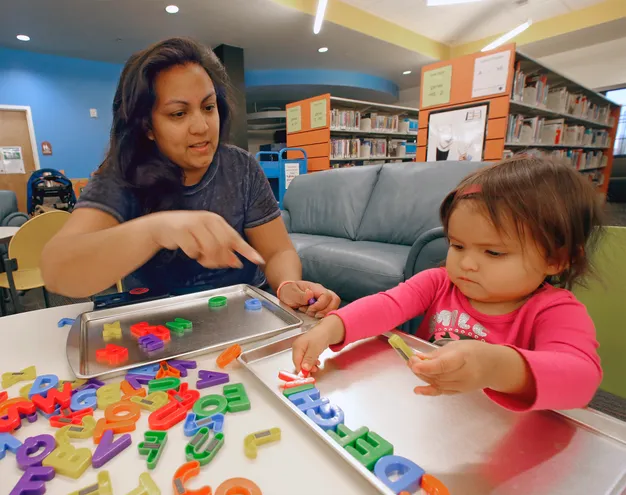Florida ranked in this list as one of worst states for early education quality. Here’s why
Palm Beach Post | By Lianna Norman | August 3, 2023
Early education child care workers and preschool teachers in Florida only get paid around $10 to $12 an hour to provide learning foundations for the state’s children who are not yet of age for kindergarten.
And the median wage for preschool or child care center directors statewide has dropped by about 14% since 2017, down to around $20 an hour, according to the Center for the Study of Child Care Employment.
Although quality education for high schoolers, middle and elementary students is important, the quality of education at the preschool level is just as crucial to providing foundations for academic success.
A recent study released by WalletHub compared the 50 states and the District of Columbia across 12 metrics, including share of school districts that offer a state pre-K program, number of pre-K quality benchmarks met and total reported spending per child enrolled in pre-K.
Here’s how Florida ranked nationally for the quality of its early education system.
What is Florida’s rank in early education compared to other states?
(L-R) Lisa Krall goes over colors and letters with her daughter Aria Krall, 2, during the sensory experiences time for preschool children at the library in Haines City, Florida March 21, 2018. The story time has a a sensory experiences segment after the story portion of the program. The Ledger
Florida took 40th place out of WalletHub’s 51 rankings for overall early education quality. The rankings were created using 12 metrics.
Each metric was graded on a 100-point scale, with a score of 100 representing the highest quality of early education. The scores for each metric were averaged to create an overall ranking for each state and the District of Columbia.
Here are the metrics WalletHub used:
- Access:
- Share of school districts that offer state pre-K program
- Share of 3 and 4-year-olds enrolled in state pre-K program
- Share of 3- and 4-year-olds enrolled in pre-K, pre-K special education and head start programs
- The presence of waiting lists or frozen intake for child care assistance
- Quality
- Pre-K quality benchmarks met. This metric considers the following benchmarks: Early learning and development standards, curriculum supports, teacher has a bachelor’s degree, specialized training in pre-K, assistant teacher has CDA or equivalent, staff professional development, class size 20 or lower, staff-to-child ratio of 1:10 or better, vision, hearing, & health screening & referral, continuous quality improvement system.
- Income requirement for state pre-K eligibility
- Requirement of school safety plans and audits
- Resources and economic support
- Total reported spending per child enrolled in preschool. This metric considers the amount of all reported funds (local, state, and federal) spent per child participating in pre-K programs.
- Change in state spending per child enrolled in preschool (2018-19 to 2019-20 school years)
- Total state head start program spending per child enrolled in preschool
- Monthly child care co-payment fees as share of family income
What state has the best preschools?
Here’s WalletHub’s full list of rankings for overall quality of early education systems by state:
- Arkansas
- Nebraska
- Maryland
- New Jersey
- District of Columbia
- South Carolina
- Rhode Island
- Oregon
- Connecticut
- Vermont
- West Virginia
- Michigan
- New Mexico
- Oklahoma
- Nevada
- Illinois
- Pennsylvania
- Alabama
- Wisconsin
- Louisiana
- Kentucky
- Tennessee
- South Dakota
- Iowa
- Maine
- Washington
- Delaware
- Texas
- Hawaii
- Kansas
- Virginia
- Utah
- California
- Georgia
- Ohio
- Mississippi
- Arizona
- New York
- North Carolina
- Florida
- Colorado
- Wyoming
- Alaska
- Montana
- Idaho
- North Dakota
- New Hampshire
- Missouri
- Massachusetts
- Minnesota
- Indiana
Top 5 indicators in evaluating the best and worst early education systems
Here are 5 key factors in evaluating the quality of early education systems, according to Julia Kroeker, a professor of Early Childhood Education at Florida SouthWestern State College:
- The most important factor for a quality early learning program is the people: hiring (and retaining) quality educators who give children individual attention (small class sizes) and having a highly qualified and caring director or principal.
- For a program to be high-quality, the children must have access to high-quality, safe materials that they can use creatively.
- The building and outdoor area should be safe and in good repair. There should be good ventilation, natural light, and ample space for children to move about the classrooms.
- Parent and family involvement.
- Developmentally appropriate expectations. This means that young children are allowed the freedom to explore and play and movement and play are built into the day. Children are seated in groups for collaborative work rather than individual desks. Kindergarten children should not be expected to sit in desks for long periods of time, completing worksheets independently. Young children should not be expected to eat lunch in complete silence but should be able to talk with their friends while they eat.
How much does childcare cost in Florida?
According to Winnie, a marketplace for child care that helps parents find daycare and preschools, the average cost of full-time daycare in Florida is $740 each month.
The cost of high-quality early education is out of reach for a lot of Florida families, but there is subsidized help available. Options are available to help defer the cost of tuition for qualifying families, from county-issued subsidies, to free pre-K programs.
One of the options available for Florida families is the Florida Department of Education’s School Readiness Program, which offers assistance to low-income families for childcare.
According to Winnie, you can find eligibility requirements and apply for the program by visiting your county’s early learning coalition website.






